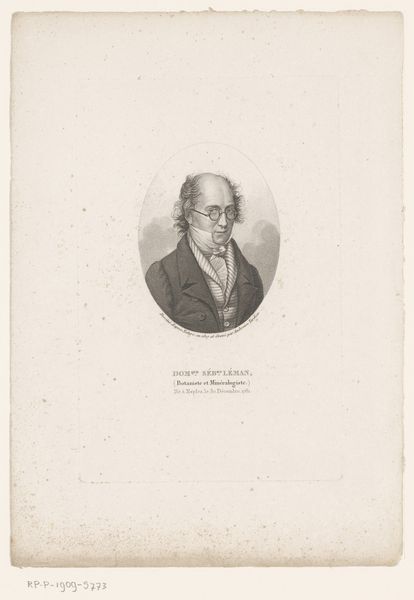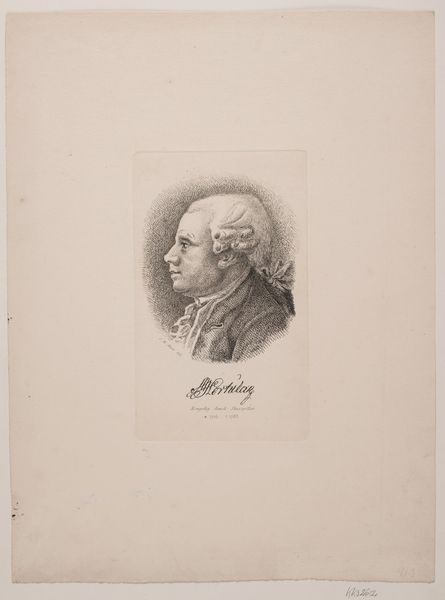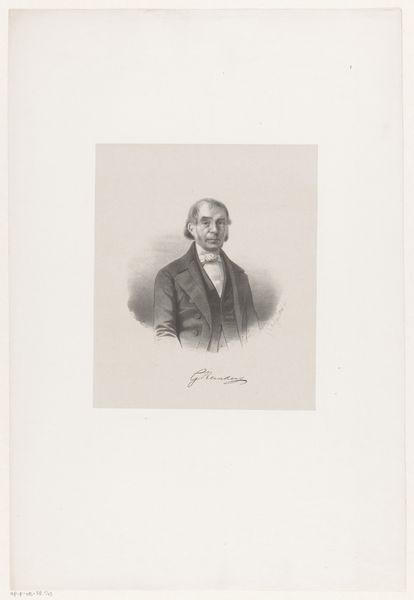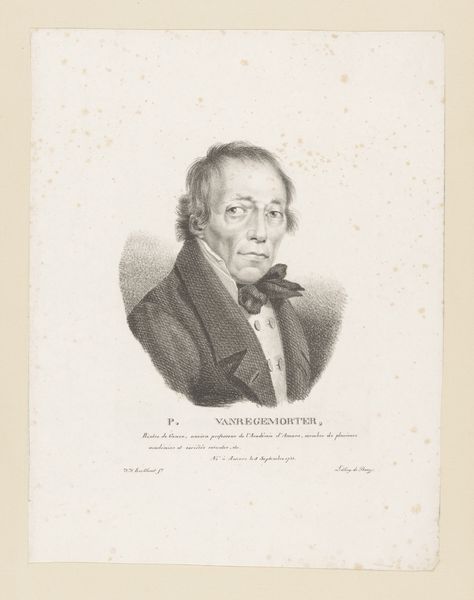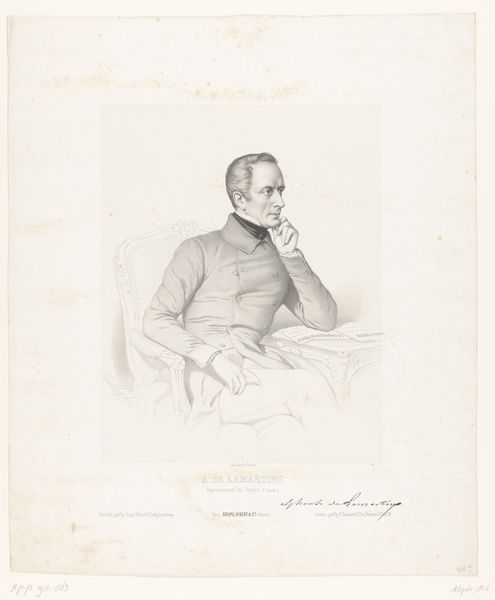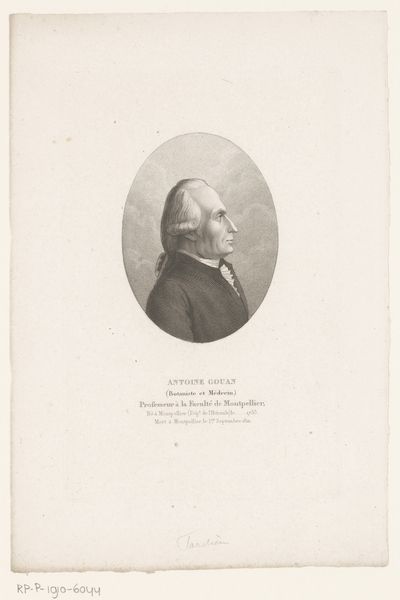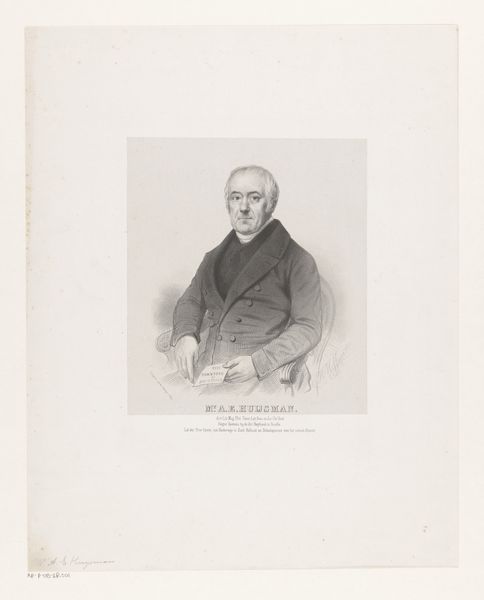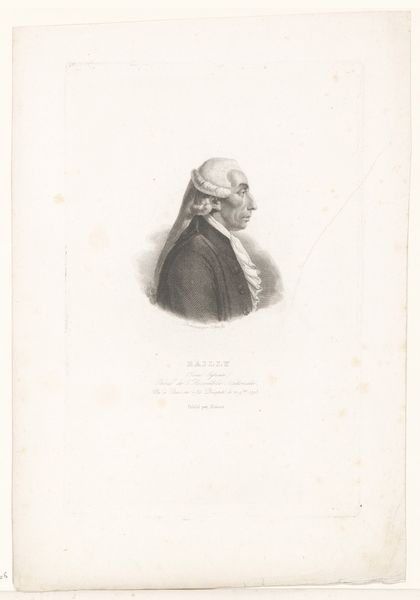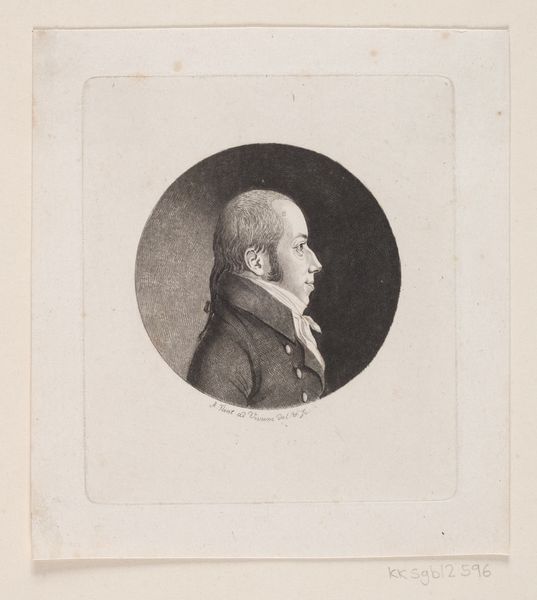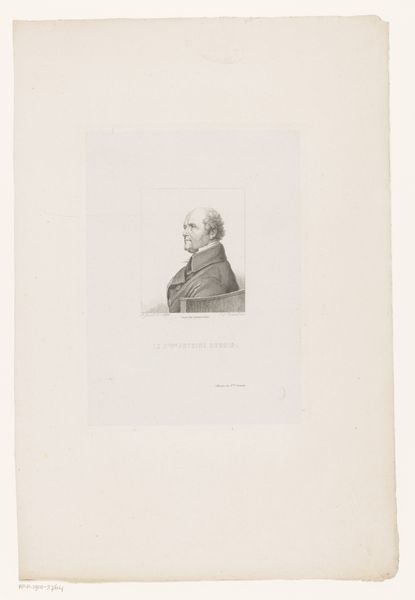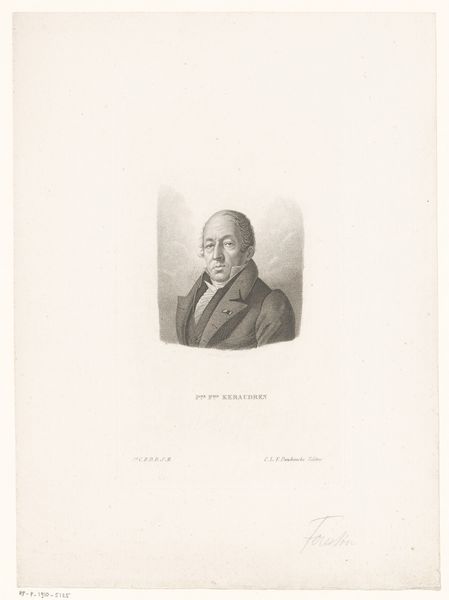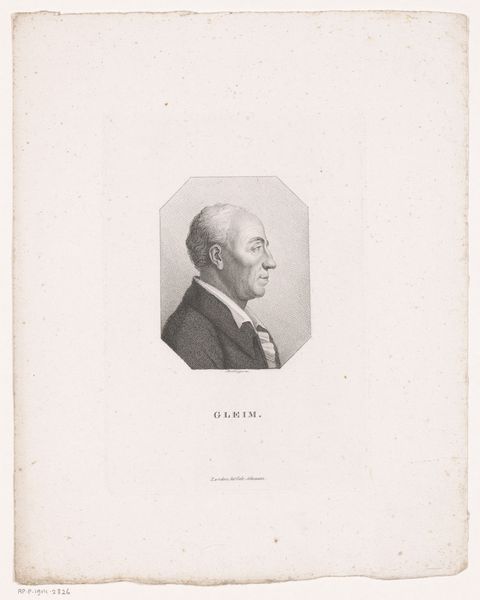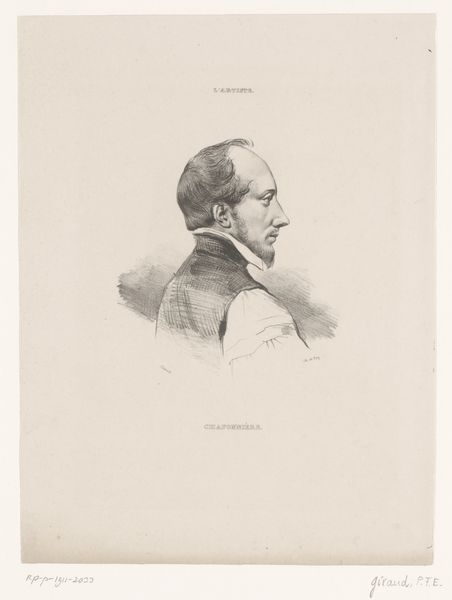
print, engraving
#
portrait
#
neoclacissism
# print
#
old engraving style
#
pencil drawing
#
engraving
Dimensions: height 309 mm, width 240 mm
Copyright: Rijks Museum: Open Domain
Curator: Oh, this has a pensive aura about it. Stark, perhaps, yet intensely present. Editor: Indeed. What you're seeing is an engraving from 1822 titled "Portret van Jacques Albert Sénevé." It's held here at the Rijksmuseum, and it’s by Guillaume Philidor Van den Burggraaff. A neat little example of Neoclassical portraiture rendered in print. Curator: It's remarkable, isn't it? The sitter seems lost in thought, gazing just beyond us. I imagine he’s thinking through the problems of the universe or simply what to have for tea. It strikes me as very intimate, despite its formal style. Editor: Intimacy, yes, but within a very particular frame. This engraving reflects the Enlightenment's focus on reason and order, doesn’t it? Sénevé was clearly a figure of some importance. The clean lines, the detailed rendering – they all contribute to constructing an image of authority and intellectual prowess. And look at the careful detail given to the face and to the inscriptions beneath the portrait, declaring his academic accolades. Curator: It’s a curious thing, though, this presentation of intellect through a visual medium. What’s being conveyed that goes beyond just his appearance? It almost feels like the print medium is meant to distill a kind of essential being from him…like an essence of Sénevé for posterity! Editor: That's a perceptive point. Engravings like this one circulated widely. They democratized representation, to an extent. However, access to these images was still limited to the privileged classes. This image, thus, also functions as a way of solidifying his status and contributing to the construction of historical memory. It's about creating an ideal for others to emulate – an aspiration towards reason, discipline, and societal contribution. Curator: Ah, so we are not just contemplating a face but the tangible manifestation of cultural aspiration… So perhaps not tea then, after all, but world changing manifestos on his mind! Editor: Perhaps! The artwork gives insight into not only the subject but also the priorities of the age in which he lived. It's a beautiful study in character as a product of its time. Curator: Indeed, both its intimacy and historical import can leave one pondering its significance. Editor: Agreed. And that, I think, is part of the joy of engaging with pieces like this.
Comments
No comments
Be the first to comment and join the conversation on the ultimate creative platform.
